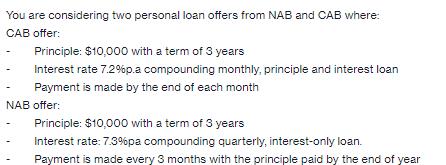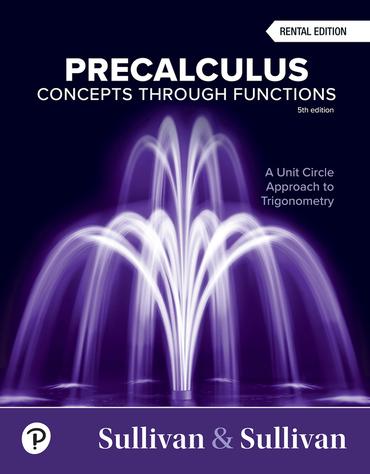Answered step by step
Verified Expert Solution
Question
1 Approved Answer
Complete the following questions: a) Which loan has higher periodic payments and why? (You can convert monthly payments in the CBA offer into quarterly payments
 Complete the following questions:
Complete the following questions:
a) Which loan has higher periodic payments and why? (You can convert monthly payments in the CBA offer into quarterly payments by multiplying monthly payments to 3).
b) Which loan has a higher total interest expense over the loan term.
c) To make your own decision in choosing an offer, which factors are critical in consideration?
You are considering two personal loan offers from NAB and CAB where: CAB offer: Principle: $10,000 with a term of 3 years Interest rate 7.2%p.a compounding monthly, principle and interest loan Payment is made by the end of each month NAB offer: Principle: $10,000 with a term of 3 years Interest rate: 7.3%pa compounding quarterly, interest-only loan. Payment is made every 3 months with the principle paid by the end of year
Step by Step Solution
★★★★★
3.39 Rating (143 Votes )
There are 3 Steps involved in it
Step: 1
a We must compute the monthly payment for the CAB offer and the quarterly payment for the NAB offer in order to compare the two loans periodic payments Regarding the CAB offer 10000 is the principal P ...
Get Instant Access to Expert-Tailored Solutions
See step-by-step solutions with expert insights and AI powered tools for academic success
Step: 2

Step: 3

Ace Your Homework with AI
Get the answers you need in no time with our AI-driven, step-by-step assistance
Get Started


